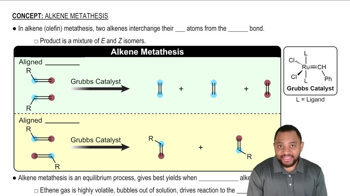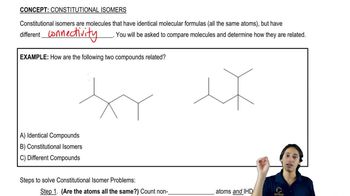Draw the products of the following reactions. If the products can exist as stereoisomers, show which stereoisomers are formed
f. 1,2-dideuteriocyclohexene + H2, Pd/C
 Verified step by step guidance
Verified step by step guidance Verified video answer for a similar problem:
Verified video answer for a similar problem:



 5:21m
5:21mMaster General properties of catalytic hydrogenation. with a bite sized video explanation from Johnny
Start learning